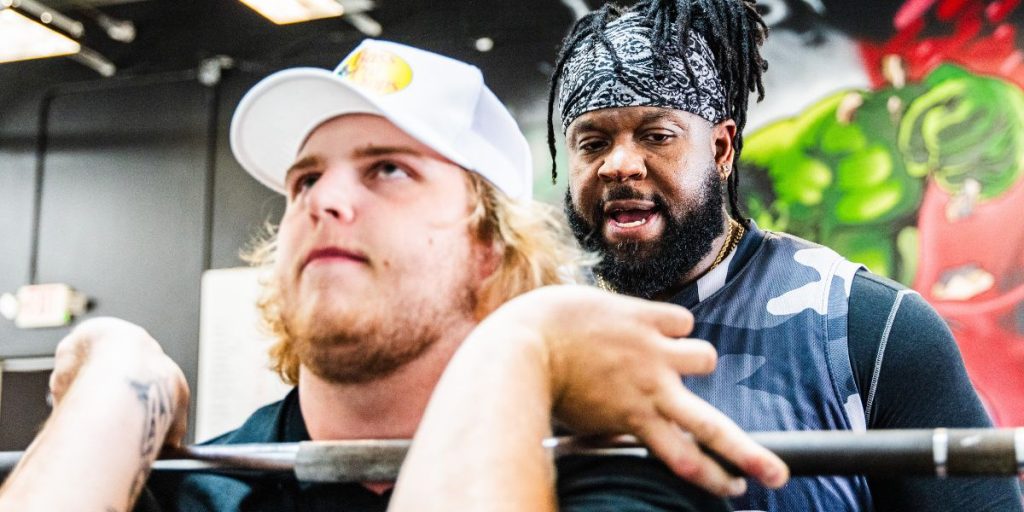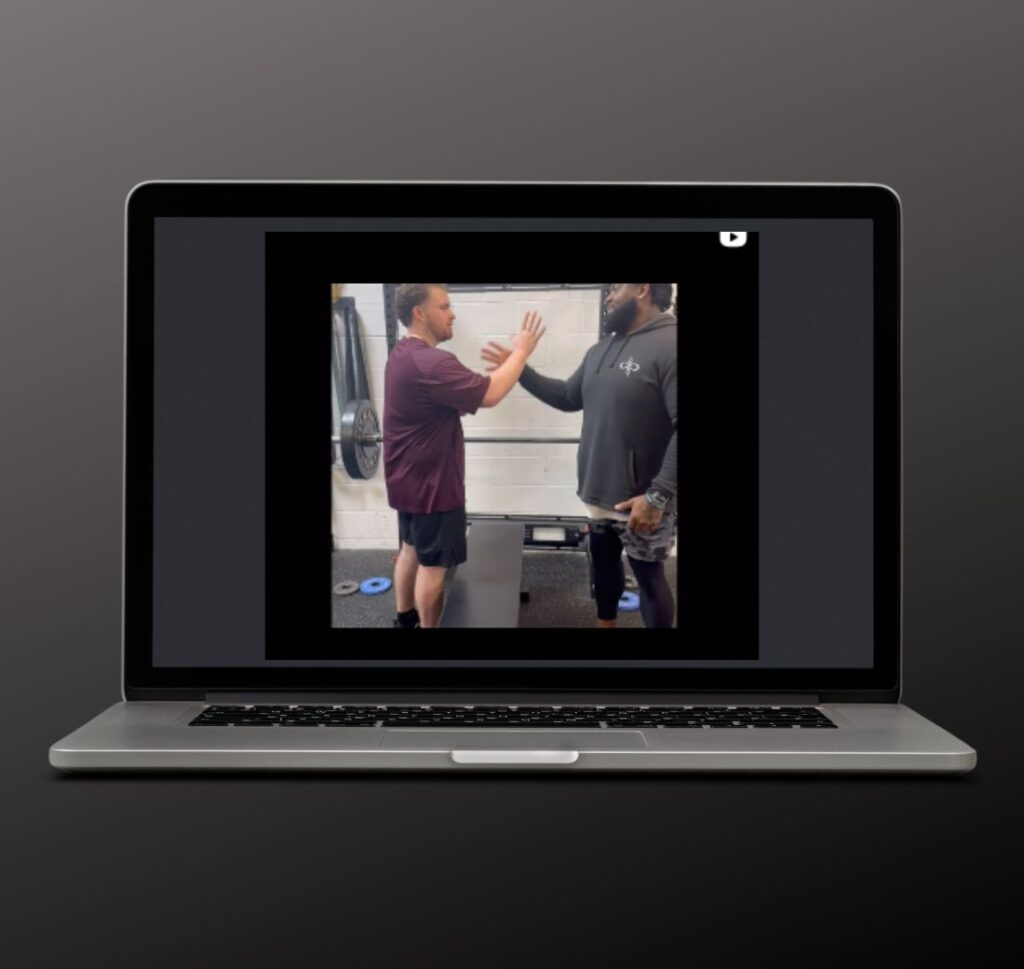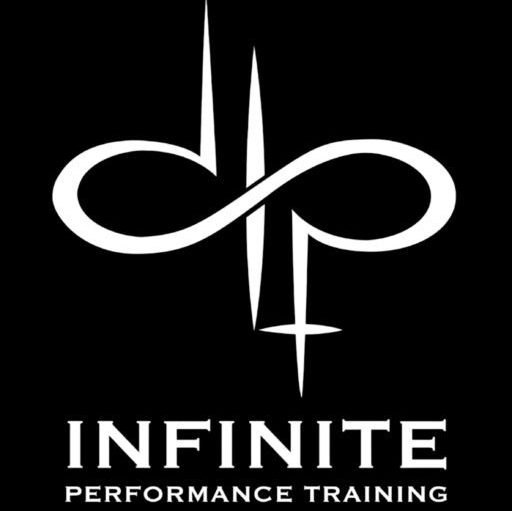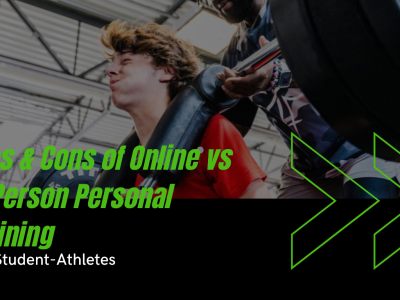Which is better, online personal training vs in-person training? The answer really boils down to a few factors, timing and location being two of the biggest.
You can scroll TikTok for “six-pack in six minutes” workouts, but here’s the truth: abs aren’t born in your bedroom with a shaky phone tripod. They’re forged under sweat, coaching, and accountability. Still, online personal training apps and Zoom sessions are racking up fans.
The debate? Old-school in-person coaching versus the convenience of digital guidance. Who’s actually getting faster, stronger, leaner—and who’s just collecting monthly subscription charges? Keep reading as we rip through the pros and cons like it’s a heavyweight title fight.
What Are the Key Differences Between Online and In-Person Personal Training?
Peloton might make you think sweat is universal, but the truth is that how you train changes everything. Online and in-person training share the same end goal—getting stronger, faster, better—but the paths couldn’t feel more different.
Here’s a breakdown that cuts through the fluff:
| Category | Online Training | In-Person Training |
|---|---|---|
| Accessibility | Train anywhere with Wi-Fi and a screen. Flexible schedules, no commute. | Locked to gym or studio hours. Requires showing up physically. |
| Coaching Style | Pre-recorded sessions or live video calls. Feedback is limited and sometimes delayed. | Real-time corrections, hands-on guidance, instant form fixes. |
| Customization | Often, templated programs are adjusted via check-ins. | Fully tailored workouts adjusted on the spot. |
| Motivation Factor | Self-driven; accountability depends on your discipline. | Trainer presence adds pressure and encouragement in real time. |
| Cost | Usually, cheaper monthly subscriptions. | Higher hourly/session rates but with direct supervision. |
| Equipment Use | Limited to what you have at home. | Access to gym equipment, specialized tools, and a trainer’s expertise. |
| Progress Tracking | Apps and digital dashboards track reps, sets, and goals. | Trainer notes, measurements, and ongoing physical evaluation. |
| Community | Virtual groups or online forums. | In-person camaraderie, gym culture, and face-to-face support. |
What Defines Online Personal Training and Its Core Benefits?

Online personal training delivers customized workout plans through digital platforms, enabling flexible access to guidance that enhances adherence through consistent remote feedback.
Core benefits include:
- Video critiques and program tweaks on your schedule
- Subscription models that scale with your commitment
- Access to top-tier coaches regardless of zip code
These attributes empower trainees to train on their own terms, laying the groundwork for understanding how in-person coaching compares.
How Does In-Person Personal Training Provide Unique Advantages?
IHere’s the blunt truth: online training usually wins the price war. Digital platforms slash overhead, so you pay 30–70% less than what you’d fork out for in-person sessions. That’s not pocket change—it’s the difference between paying for your trainer or paying for your trainer and your gym’s rent.
The split looks like this:
- Online: Scalable subscriptions, lower cost-per-session
- In-person: Premium rates, but with gym access and real-time coaching baked in.
The real question isn’t “which is cheaper?” it’s “what feels like value?” Some pay extra for a barbell in hand and eyes on form; others pocket the savings and go digital.
What Is Hybrid Personal Training and How Does It Combine Both Models?
Think of hybrid training as the “Stranger Things” of fitness—it’s not one world or the other, it’s both. You get the flexibility of online check-ins for the weekday grind, but you still show up for in-person coaching when it matters most. It’s accountability without the overkill.
How it works in practice:
- Weekly video feedback keeps you on track
- Monthly in-person sessions fine-tune lifts and form
- Shared progress tracking connects both worlds seamlessly
Hybrid isn’t a compromise—it’s a smart mashup. It’s for the athlete who wants freedom but still craves the edge of a coach watching every rep when the stakes are highest.
What Are the General Pros and Cons of Online vs In-Person Personal Training?
Comparing training modalities across cost, flexibility, accountability, feedback, equipment access, and relationship quality reveals distinct trade-offs that influence both results and experience.
| Factor | Online Training | In-Person Training |
|---|---|---|
| Cost | Subscription models lower per-session fees | Premium per-session rates reflect hands-on support |
| Flexibility | On-demand workouts fit any schedule | Fixed appointments tied to location and availability |
| Accountability | Digital reminders and community challenges | Scheduled sessions with live encouragement |
| Feedback & Form Correction | Video analysis, delayed coach response | Instant tactile cues and posture adjustments |
| Equipment Access | Limited to home gear or minimal investments | Full gym facilities, machines, and free weights |
| Trainer–Client Relationship | Built via messaging and video calls | Developed through face-to-face interaction |
Cost savings via online plans often come at the expense of live supervision, whereas in-person rates mirror enhanced coaching presence.
How Do Cost and Affordability Compare Between Online and In-Person Training?
Online personal training typically costs 30–70% less per session than in-person coaching, offering scalable subscription tiers that reduce the average price per workout. Budget-minded clients leverage app-based packages, while premium in-person rates reflect one-on-one attention and facility fees.
These pricing dynamics naturally shift the value perception of flexibility and convenience.
Which Training Modality Offers Greater Flexibility and Convenience?

Here’s where the fight gets interesting. Online training is undefeated in flexibility—you can squeeze a session in at 5 a.m. before work, or during a beach vacation with nothing but a resistance band. Apps adjust your plan instantly; no commute, no scheduling shuffle.
Flexibility perks include:
- Early-bird or night-owl workouts with zero travel
- Portable routines that work in hotels or backyards
- Real-time digital adjustments when life gets messy
But here’s the devil’s advocate play: freedom doesn’t always equal follow-through. Some thrive on autonomy; others ghost their apps after week two. In-person keeps you honest because skipping a workout means staring your trainer in the eye..
How Does Accountability and Motivation Differ in Online vs In-Person Coaching?
Accountability in in-person coaching is reinforced by scheduled contact and immediate encouragement, while online coaching relies on digital reminders and community threads to sustain motivation.
- Face-to-face trainers push through plateaus
- Apps generate streaks and virtual badges
- Hybrid clients benefit from both push and structure
Combining live support with digital engagement often yields the highest adherence rates.
What Are the Differences in Feedback and Form Correction?
In-person coaching provides tactile cues and live posture adjustments, whereas online training depends on video analysis tools and delayed feedback to refine technique.
- Spotting during heavy lifts minimizes risk
- Slow-motion video breakdown highlights micro-errors
- Hybrid sessions ensure execution fidelity
Quality of feedback directly influences progress, leading to distinct outcomes in each setting.
How Does Access to Equipment and Facilities Impact Training?
Home-based online training often leverages minimal equipment and bodyweight exercises, while in-person sessions grant full access to specialized machines and free weights for comprehensive programming.
- Resistance bands and dumbbells at home
- Olympic platforms, cable machines, and sleds in the gym
- Hybrid schedules allow occasional gym immersion
Equipment variety determines exercise selection, which affects specific goal adaptations.
GET IN TOUCH
Schedule a Training Session
How Important Is the Trainer-Client Relationship in Each Modality?
In-person interactions foster stronger rapport and observational insights, while online coaching builds connection through personalized digital support and multimedia resources.
- Body language cues reveal effort and form
- Recorded messages reinforce encouragement
- Clients develop trust both virtually and live
The depth of connection often correlates with long-term client satisfaction and results.
How Do Online and In-Person Training Affect Strength, Speed, and Endurance Goals?
Each training modality influences specific fitness objectives through unique coaching mechanisms, making modality choice critical for targeted adaptation in strength, speed, and endurance.
Strength
- Online: Offers progressive overload plans and video critiques, but relies heavily on your discipline and access to equipment.
- In-person: Hands-on spotting, instant form corrections, and load adjustments make it easier to safely push heavy lifts.
Speed
- Online: Flexible drills and sprint programming you can do anywhere, great for athletes who travel or juggle busy schedules.
- In-person: Coaches fine-tune mechanics—arm drive, stride length, acceleration angles—in real time, shaving seconds you’d miss without feedback.
Endurance
- Online: Long-term tracking through apps and wearable integration helps tailor mileage and pace zones remotely.
- In-person: Trainers monitor breathing, fatigue, and pacing cues directly, building accountability during those grind-it-out sessions.
How Effective Is Online vs In-Person Training for Building Strength?
In-person strength coaching excels at guiding progressive overload with precise load adjustments, while online platforms achieve comparable hypertrophy when programs include detailed rep schemes and clear form demonstrations.
| Exercise Type | Online Support | In-Person Support |
|---|---|---|
| Barbell Squat | Video form review and rep targets | Manual spotting and load increment |
| Deadlift Progression | Written cues and week-by-week plans | Real-time posture correction |
| Progressive Overload | Automated weight logs | Live weight selection feedback |
Structured online programming can match gym-based strength gains when executed consistently under digital supervision.
What Are the Advantages of Each Modality for Speed Development?
In-person sessions facilitate dynamic sprint drills and immediate feedback on mechanics, whereas online speed programs use high-speed video analysis to refine form remotely.
- Acceleration technique honed via live coaching
- Mobile app splits track zone-specific improvements
- Athletes combine track days with virtual reviews
These complementary methods accelerate neuromuscular adaptation for sprint performance.
How Do Online and In-Person Training Support Endurance Improvement?
Online endurance programs leverage GPS-based tracking and adaptive training zones for remote marathon preparation, while in-person coaching uses lab-grade heart rate monitoring to optimize pacing strategies.
- Virtual long-run maps with pace alerts
- Live treadmill tests with lactate threshold analysis
- Hybrid runners rotate solo routes with coached sessions
Data-driven planning underpins both models, enhancing cardiovascular resilience.
How Does Each Training Type Contribute to Injury Prevention and Rehabilitation?
Hands-on sessions identify and correct movement dysfunction in real time, reducing injury risk, whereas online platforms integrate corrective exercise videos and questionnaire-driven screening to manage rehabilitation remotely.
- Manual muscle length testing in-person
- At-home mobility drills guided by tutorial clips
- Clients receive lab scans and follow-up remote check-ins
Comprehensive screening and tailored corrective protocols bolster long-term athlete health.
What Factors Should You Consider When Choosing Between Online and In-Person Personal Training?
Are you the type who thrives with freedom, or do you need someone watching your every rep to keep you accountable? It’s the classic “discipline vs. structure” battle, and the answer can make or break your results.
When weighing options, look at three core filters:
- Experience level – Beginners often need hands-on guidance to learn proper form safely, while veterans might crave autonomy.
- Budget – Digital subscriptions stretch dollars further, but in-person rates often include valuable gym access and live expertise.
- Schedule – Irregular hours favor the flexibility of virtual coaching, while those with a set routine benefit from face-to-face consistency.
How Do Experience Level, Budget, and Schedule Influence Your Choice?
Novices benefit from hands-on correction and structured gym sessions, while seasoned trainees leverage online plans to fine-tune technique and volume. Budget-minded individuals often start with virtual packages, and busy professionals value on-demand access during irregular hours.
This triad of factors frames the decision process, leading to considerations about coach credentials.
Why Is Trainer Certification and Qualification Important for Both Modalities?
Certified trainers ensure safe progression and evidence-based programming, whether delivering guidance in person or via virtual platforms, making credentials a critical selection criterion.
- Accredited anatomy and physiology background
- Specialized certifications in strength or endurance coaching
- Continuing education in sports science
Validating qualifications safeguards against ineffective or unsafe programming.
How Can Success Stories and Case Studies Inform Your Decision?
Examining real-world client transformations under different training modalities illustrates practical outcomes and highlights effective strategies for similar goals, building confidence in the chosen approach.
- Beginner strength gains in face-to-face programs
- Speed improvements via video-based technique drills
- Endurance milestones achieved through hybrid pacing plans
These examples showcase modality strengths and guide expectation setting.
Verdict
Did you know more people ghost their gym memberships than their dating apps? Don’t let your fitness goals become another swipe-left regret. Whether you lean online, in-person, or hybrid, the point is simple: progress starts when you commit.
Lucky for you, here at Infinite Performance Training, we offer both online and in-person training options (and hybrid too). We have professionals who travel for work who will train virtually with our team or in person. Most of our student-athletes train in person, but there is an online option too!
To learn what is best for you, reach out to us today here:
GET IN TOUCH


 The Best Football Workout Routines for Student-Athletes
The Best Football Workout Routines for Student-Athletes
Leave a Reply